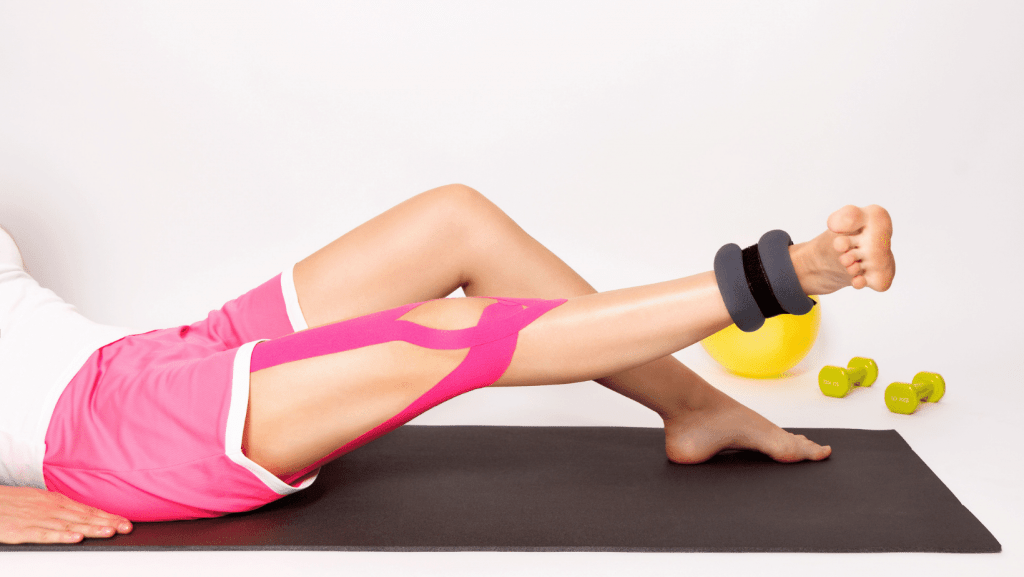R.I.C.E., or Rest, Ice, Compression, and Elevation, was once the go-to approach to managing your injury. However, recent scientific research has shown that this approach may not be the best way to heal.
M.E.A.T., or Movement, Exercise, Analgesia (pain relief), and Treatment, is a newer approach to treating injuries that emphasizes the importance of early movement and exercise. This is in contrast to the older R.I.C.E. method, which focused on reducing inflammation and pain.
Movement and exercise help to improve blood flow to the injured area, which can promote healing. They also help to prevent muscle atrophy and stiffness.
Analgesia, only for pain reduction, is used to manage pain and inflammation. This can be done with over-the-counter pain medications, prescription medications, or physical and massage therapy modalities.
Treatment may include physical therapy, massage therapy, occupational therapy, or other modalities to help the person recover from their injury and return to their normal activities.
M.E.A.T. is a more comprehensive approach to treating injuries than R.I.C.E., and it is supported by more recent scientific research. It is important to note that the best approach to treating an injury will vary depending on the type and severity of the injury, as well as the individual’s overall health and fitness. It is always best to consult with a doctor for get personalized advice and before taking medications.
Tips for following the M.E.A.T. approach to injury recovery
Movement
- Start moving the injured area as soon as possible, within your pain limits.
- Gentle range-of-motion exercises are a good way to start.
- As the pain and inflammation subside, you can gradually increase the intensity and duration of your workouts.
Exercise
- Exercise can help to strengthen the muscles around the injured area and improve your overall fitness.
- Start with light, low-impact exercises, such as walking or swimming.
- As you get stronger, you can gradually add more weight and intensity to your workouts.
Analgesia
- Use over-the-counter pain medications or prescription medications to manage pain and inflammation.
- You can also use physical therapy modalities such as massage, heat, and electrical stimulation.
Treatment
- Depending on severity, see a doctor, physiotherapist or sports massage therapist to get personalized advice on how to manage your injury.
- They can develop a treatment plan that is right for you and help you to recover safely and effectively.

Some examples of applying the M.E.A.T. approach to common injuries
Ankle sprain
- Movement: Start moving your ankle as soon as possible, within your pain limits. You can do gentle range-of-motion exercises, such as ankle circles, pointing your toes up and down, and drawing the alphabet with your toes.
- Exercise: Once the pain and inflammation have subsided, you can start to strengthen the muscles around your ankle. You can do exercises such as calf raises and single leg balance exercises.
- Analgesia: Use over-the-counter pain medications or prescription medications to manage pain and inflammation, but only if needed. You can also use elevation, if this gives you relief.
- Treatment: See a sports massage therapist or physiotherapist to get personalized advice on how to manage your ankle sprain and prevent re-injury.
Knee pain
- Movement: Start moving your knee as soon as possible, within your pain limits. You can do gentle range-of-motion exercises, such as bending and straightening your knee.
- Exercise: Once the pain and inflammation have subsided, you can start to strengthen the muscles around your knee. You can do exercises such as quadriceps sets, hamstring curls, and calf raises.
- Analgesia: Use over-the-counter pain medications or prescription medications to manage pain and inflammation, if absolutely required.
- Treatment: See a sports massage therapist or physiotherapist to get personalized advice on how to manage your knee pain and prevent re-injury.
Shoulder pain
- Movement: Start moving your shoulder as soon as possible, within your pain limits. You can do gentle range-of-motion exercises, such as arm circles and shoulder rolls.
- Exercise: Once the pain and inflammation have subsided, you can start to strengthen the muscles around your shoulder. You can do exercises such as external rotations, internal rotations, shoulder dislocates, and rows.
- Analgesia: Use over-the-counter pain medications or prescription medications to manage pain and inflammation, if required.
- Treatment: See a sports massage therapist or physiotherapist to get personalized advice on how to manage your shoulder pain and prevent re-injury.
M.E.A.T. is a newer approach to treating injuries that is supported by more recent scientific research. It is important to note that the best approach to treating an injury will vary depending on the type and severity of the injury, as well as the individual’s overall health and fitness. It is always best to consult with a doctor, physiotherapist or sports massage therapist to get personalized advice on how to manage your injury.
If you are interested in learning more about how M.E.A.T. can help you recover from an injury, please contact me to see how I can help. I would be happy to answer any questions you have and develop a personalized treatment plan for you.
Early movement and exercise are more effective at reducing pain and improving function in people with acute ankle sprains than the traditional R.I.C.E. method. (Bizzini M, Junge A, Staub P, et al. Early mobilization versus immobilization for acute ankle sprain: a randomized controlled trial. JAMA 2011;306(13):1411-20.)(link)
People with knee osteoarthritis who participated in a supervised exercise program had better pain relief and improved function than those who received standard medical care. (Fransen M, McConnell S, Reichenbach S, et al. Exercise for osteoarthritis of the knee. Cochrane Database Syst Rev 2001;(3):CD004376.) (link)
A review of studies found that there was strong evidence to support the use of exercise for treating chronic pain. (van Tulder MW, Malmivaara A, Koes BW, et al. Exercise for chronic pain in adults: general advice and algorithm. BMJ 2005;332(7538):33-7.)
NSAIDs and musculoskeletal treatment: What is the clinical evidence? (Stovitz, S. D., & Johnson, R. J. The Physician and Sportsmedicine, 31(1), 35-52. doi: 10.3810/psm.2003.01.160) (link)